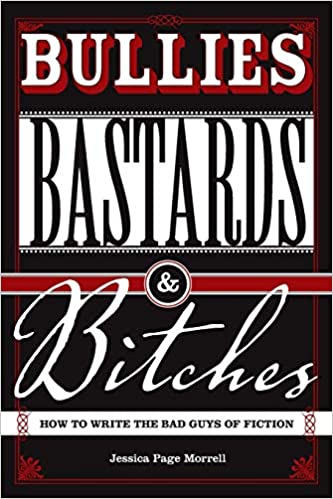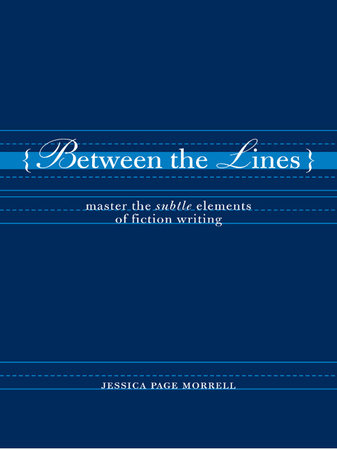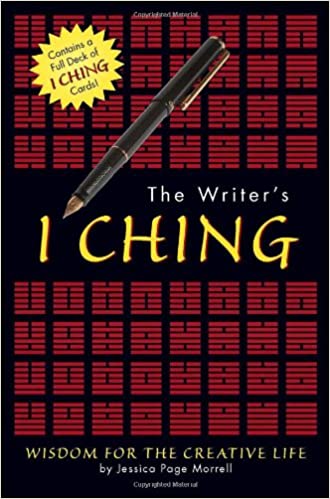 Contents:
Contents:
- What Editor’s Notice
- Top Eleven Reasons Why Manuscripts are Rejected
- Tips for Staying Out of the Rejection Pile
- Tips for Fiction Writers
- Tips for Nonfiction Writers
- Common Fiction Errors
- Top Drawer Tools: Synopsis
1. What Editor’s Notice
Editors and agents are word people, most were English majors in college and have a great love and respect for the written word. They will notice your level of craft within the first sentences, so your efforts must be polished, vivid and exceptional.
- Your manuscript lives or dies on your opening sentences and each word must be perfect, precise, and weighted with meaning.
- Editors notice and are turned off by passive voice and wimpy verbs.
- Editors notice when the viewpoint jumps or shifts within a scene.
- Editors notice too much telling (reporting or summary) and not enough showing in all types of writing including essays and memoir.
- Editors notice when emotions are announced instead of dramatized.
- Editors notice frequent use of names in dialogue. Generally, leave out names.
- An editor notices sloppy punctuation such as excess use of exclamation points, quote marks around inner thoughts, improper use of semi colons and ellipsis.
- Editors notice protagonists who are not proactive, heroic in some way, and bigger than life.
- Editors notice characters with a limited emotional range and expression.
- Editors notice large and small inaccuracies and inconsistencies—when the character has blue eyes on page 23 and green eyes on page 57; when a character drives an old, beat-up, pick-up truck that is inexplicably equipped with airbags; when an animal, plant, or species of any sort is misnamed or shows up in the wrong region of the country.
- Editors notice when technical details don’t ring true—such as in a mystery when police don’t follow standard arrest procedure; when a yacht sinks from a single bullet hole; or explosive materials are used haphazardly.
- Editors notice vague descriptions (plant instead of ivy, tree instead of oak) and generalities instead of details that bring the reader into a specific time and place.
- Editors notice when writers don’t write for all the senses, especially leaving out smells.
- Editors notice small confusions such as misusing it’s and its, that and which, affect and effect, compliment and complement, lay and lie.
- Editors notice overly long paragraphs and a general lack of white space. Generally paragraphs are five or six sentences long and as taught in grade school introduce a topic, develop a topic, then conclude or lead on to the next paragraph.
- Editors notice a lack of transitions—the words and phrases that announce a change in mood or emotion, time, and place so the reader can easily follow. They also know excess transitions as when you follow your characters across every room and along every sidewalk.
- Editors notice excess modifiers, purple prose, and too much description. The best writing is lean and economical and every word in every sentence has a job to do.
- Editors notice a voice that is flat, inappropriate, or boring. Voice, whether it is the writer’s voice in an essay or the viewpoint character or narrator in fiction, must breathe life into the piece and hint at the person behind the words.
2. Top Eleven Reasons Why a Manuscript is Rejected
© Jessica P. Morrell
1. The manuscript format is inappropriate or contains errors. There are no exceptions to the guidelines for manuscript submission. Margins, line spacing, fonts and formats must be adhered to or your manuscript will be ignored.
1a. The manuscript has been sent to the wrong person or house. For example you send a category romance to a publisher that only publishes mainstream. Submissions require meticulous research and care. Whenever possible, make contacts in the industry and in general, send brief inquiries before sending any manuscript pages.
2. The writing style is sloppy, flowery, cluttered with modifiers. Overuse of modifiers is one of the most obvious indicators of an unsophisticated or sloppy writer at work. The simple solution is to limit your use of modifiers and use them only when they contain information that a noun or verb cannot.
3. Mechanical errors such as spelling mistakes, grammar slip-ups, poorly constructed sentences, or punctuation problems. In an increasingly competitive marketplace, these errors will knock you out of the running. Editors and agents are only interested in professional, polished and error-free writing.
4. The conflict is weak or boring. Conflict ignites and powers a story. Your protagonist must be up against powerful opposition at every turn and must fight these forces with an all-out offensive.
5. The opening does not contain a hook. The opening of a story is a gathering of forces to be unleashed. Stories always open with a change in the protagonist’s circumstances and this change is usually threatening. Openings also introduce a question that needs answering.
6. The story and the individual scenes do not have a sense of tension building and suspense. Readers need a reason to keep turning the page and all stories need growing intensity until the climax or resolution. A story where the tension does not rise, without unanswered questions and a series of surprises and reversals, won’t captivate readers.
7. The manuscript is plagued with dialogue disasters: overly long exchanges; characters giving speeches; or, the dialogue contains no tension or conflict. Other problems: each character does not sound distinct, characters talk about mundane topics not relevant to the story, or speech tags are distracting and filled with adverbs. Properly utilized dialogue defines characters, provides information and pushes the plot forward.
8. There is too much telling, not enough dramatization. Whenever appropriate bring the story to your readers in scenes, where they can witness it unfold in real time. “Show, don’t tell” is a useful guideline for writers, but fiction is actually ‘told’ and ‘shown.’ A combination of both techniques creates the most effective fiction. Scenes are most effective when you’re revealing characters or complicated interactions between characters. Exposition is most effective when you’re filling in background information or moving quickly between two scenes. Too much showing or too many scenes makes the story too drawn out just as too much exposition makes it static. The best stories usually move back and forth between scene and description.
9. Characters are underdeveloped. In the best fiction the reader has a sense that the characters have existed before the story began and will carry on after it ends. Memorable fictional characters are richly drawn, consistent, with dominant traits throughout.
10. The ending doesn’t deliver or satisfy. The best endings are not contrived or convenient. They are the logical and highly dramatic culmination of the proceeding events. The climax is the highest emotional pitch of your story, a decision, a collision of forces, and settling of scores.
11. The point of view is muddled or inconsistent. The point of view is the filter or lens which we see the story through. It is crucial that you understand who is telling the story and why. Viewpoint characters are generally those who will be most affected by the events of the story. If you’re using a multiple point of view, strive for a logical and consistent pattern.
 3. Tips for staying out of the rejection pile
3. Tips for staying out of the rejection pile
© Jessica Page Morrell
Research, research, research. The top reason that a manuscript is rejected is that you have sent it to the wrong agent, editor, or publisher. Know the person or company you’re sending your work to, what subjects and genres they handle, and specifically why your manuscript is appropriate for him or her.
Follow protocol and directions. Don’t phone an editor unless asked. Don’t send an entire manuscript when they want a query, proposal, synopsis, or three chapters.
Learn how to write brief, captivating queries. This sales pitch is still the most often used method of introducing yourself and your work.
Use the standard format for manuscripts. Use white, 20-pound paper. Print only on one side of the page. Double space with one inch margins. Use black ink and 12-point font. Do not right justify. Do not staple, bind, punch holes in the paper. Do not include artwork, photographs, or illustrations. Use a laser printer if possible.
Avoid gimmicks and unusual punctuation for emphasis. A manuscript should not be riddled with italics, bold face, underlines, capitalization. Neither should there be exclamation marks, too many parenthesis, question marks, comma mistakes, or unusual formats for dialogue.
Don’t give away your amateur standing. DON’T offer rights or pepper your manuscript with copyright marks.
Watch your modifiers. Burying your nouns and verbs under modifiers is the biggest indicator that your writing is weak. Every word in every sentence should have a job to do. If not, get rid of it.
Verbs are most important words in each sentence. Avoid the passive voice and using passive linking verbs. Instead, collect vivid verbs, particularly those that contain onomatopoeia. Constance Hale claims our verb use indicates whether we’re a wimp or a wizard.
Your style should not interfere with meaning or call attention to itself. Write for readers, not yourself. Edit awkward constructions. Strive for clarity and simplicity.
Dialogue immediately reveals a writer’s skills. Use it sparingly and effectively by understanding that it is inherently dramatic. Avoid long sections of endless dialogue. Also avoid long sections where there is no dialogue. Eliminate mundane exchanges and repetitions. Limit using dialogue to reveal backstory. Keep attributions short.
 4. Tips for Fiction Writers
4. Tips for Fiction Writers
© Jessica P. Morrell
- Make certain that a major crisis, reversal or twist occurs at the midpoint to send the story skittering in a new direction and creating new motivation for the protagonist.
- Make certain that your protagonist is struggling with internal conflict as well as external conflict.
- The reader’s first glimpse of the protagonist should evoke sympathy.
- Base fiction around a single dramatic question.
- Remember always that you are a storyteller first. Stories are not merely about issues or themes. Fiction is about how threatening events affect fictional people.
- While a storyline requires a series of crisis’s, surprises and reversals, do not use violence, sex, sin, gore, or murder to enliven a sagging plot.
- Don’t launch a story with too many characters for the readers to track in the opening.
- Keep dialect to a minimum and don’t write it without thorough research or intimate knowledge.
- Remember that the opening has much to accomplish including establishing the voice, viewpoint, tone, and pacing.
- Characters are revealed while acting, talking, making choices and decisions. People are what they do.
- Make certain that there is a visual element on every page.
- Create a vibrant and quirky cast of secondary and minor characters to enliven the story and reveal several sides of the protagonist.
- Don’t start major edits or rewrites until you finish your first draft.
- Nothing should happen at random, all fiction is causal.
- Each major character has an agenda.
- Avoid problems being solved by another character or force of nature.
- Beware of digressions that follow your interests or research, not the story. Rein yourself in.
- Structure scenes around scene goals and opposition to these goals.
 5. Tips for Nonfiction Writers
5. Tips for Nonfiction Writers
© Jessica P. Morrell
“Literary nonfiction is distinguished by three basic characteristics: It is based on actual events, characters, and places; it is written with a special concern for language; and it tends to be more informal and personal than other types of nonfiction writing.” Stephen Minot, Literary Nonfiction: The Fourth Genr
- Ask yourself what your memories mean.
- Keep looking deeper.
- Write in a voice that is memorable and in harmony with your roots.
- Ask other people from your past about their memories of your experiences.
- Remember that 80% of your job is to entertain
- Use fictional techniques including dialogue, scenes, and setting.
- Start in media res or in the middle of things and generally avoid using chronological order.
- Tell the truth as best you know it.
- Don’t write to show yourself in the most positive light.
- Don’t mistake having experienced pain or trauma as a sole reason for writing nonfiction.
- Don’t write for vengeance or to portray yourself as a victim.
- Use the “so what” factor to determine if your story is worth telling. Not every bruise and bump in life will captivate readers. Your skills as a storyteller, insights and themes bring meaning to life’s events.
- Work at retrieving your memory by looking at old photos, reading the novels of your childhood, watching movies that you saw at a younger age and creating a map of important places such as your childhood neighborhood.
- Stay away from melodrama and predictable themes in memoir or imbue them with a new twist or insights.
- Provide surprises for the reader along the way.
- If the piece is emotionally difficult to write, allow it to cool between drafts.
- Use suspense and tension to force readers to turn pages.
- Use the pattern of conflict, development, and resolution, especially in longer works.
Look for ideas, themes, and questions with an investigative approach. - Look for settings, dramatic world events, and personal crisis that reveal people at their most elemental, where people are defined and changed.
- A subject does not need to be glamorous to be interesting.
- Ask yourself the full implications of the topics you’re writing about.
- Ask yourself why you’re writing—to discover the truth, to leave a legacy, to remember, to understand what happened to you. No matter the reason, analysis is required.
- The facts of life are empty until you fill them with memory and imagination
 6. Common Fiction Errors
6. Common Fiction Errors
© Jessica P. Morrell
Not knowing your ending as you write. This lack of direction not only makes the process more difficult, but results in missed opportunities to insert foreshadowing and clues.
Hooks: The opening hook does not raise a compelling question and relate to the whole, and the individual chapters don’t contain their own hooks.
Not understanding your main character, especially how he or she is shaped by the past, and using these factors from the past along with motivations as the basis for the plot.
Not giving your main character tangible goals and motivations.
Not making the stakes high enough. Without high stakes, the reader won’t care.
Not creating obstacles for the character to struggle against. Without obstacles, the story will not have enough tension or suspense.
Not involving your readers emotionally. It’s important that the reader take on the character’s goals while entertaining them with the events of the story.
Adding needless flashbacks. Most stories are told in chronological order. Use flashbacks only if they add drama and reveal information that cannot be told through present action.
Dialogue: Characters all sound alike. Dialogue is generally too long, mundane or stilted. Characters give speeches. Remember, most dialogue exchanges should contain conflict.
Development: Not understanding that fiction requires introducing change throughout the story. Insert enough complications, surprises, reversals, and new elements to create tension, suspense, and to force the reader to discover how these complications turn out.
Not inserting a major complication or reversal in the middle of the story to push the plot into a fresh direction and increase the reader’s interest.
Not writing enough setting details to create a vivid, real world. Not realizing that setting can interact with plot and character and affect the mood and tone.
Forgetting that causality is a prime factor in plotting. A plot is not a series of random scenes, but connected through a chain of causal, interrelated events.
A climax that fails to offer a big pay off. As the plot concludes, tensions are unbearable, and a point of no return is reached. The conflicting forces should meet in a face-to-face contest that resolves the issues, reveals a winner, or at least changes how things look.
 7. Top Drawer Tool: Synopsis
7. Top Drawer Tool: Synopsis
©Jessica P. Morrell
“Make it new.” ~ Ezra Pound
I’m writing this column in late December and for the past few weeks have been mulling over my writing plans for the next year. I’ve got a book in progress now, but I’m planning to write several nonfiction projects, so I’ll be crafting proposals to sell these projects. Now, I’d rather yank out my fingernails one by one or undergo a series of root canals than write a proposal—there’s just something about them that fills me with dread and the worst case of procrastination this side of the Rockies. I know proposals are a top drawer tool in my toolbox of writing skills, but I still loathe writing them. Next month I’m going to write about a few things I’ve learned about writing proposals that sell. But I’ve heard this same sort of dread about writing a synopsis from fiction writers, so if you’re fortunate enough to be finishing a novel, here are some ideas for this next crucial step.
First, if you’re not fond of writing a synopsis, this doesn’t strike me as abnormal. After all, you’re summarizing about 400 pages into the briefest possible form while introducing the major players and situation and somehow leaving no questions unanswered, while not disclosing everything that happens in the story. A synopsis is part bare bones of your story (however, not too bare), part pitch, and part illustration of your writing style. And every sentence matters and pushes the story forward
Typically a synopsis completes a sales package that includes your first three chapters and sometimes a letter of introduction. Since at times editors read the synopsis first, it must be comprehensive, comprehensible, and compelling, forcing them to then peruse your chapters. Your synopsis will be read not only by an agent and editor, but if it passes muster, the marketing and art department will read it too. A synopsis will also be used in the publishing house meetings where decisions are made about what titles will be published in an upcoming season. In your synopsis these professionals want to see a thoughtful writer at work—one who has crafted an enthralling story, with a gripping main conflict and intriguing motivations in the main players. They also want to understand how the story moves logically from the inciting incident in the opening chapters to the end, with major plot points and turning points along the way.
These days there seems to me no grand consensus on the ideal length of a synopsis. If you’ve written a saga, chance are you might weigh in at 10 pages or more and if you’ve written a fairly simple tale, you might get away with a one-page shortie. Since most agents and editors are notoriously pressed for time and read so much for their jobs, the five page synopsis is appreciated by most. However, in the past the wisdom about length went like this: one double-spaced page of synopsis for each 10,000 manuscript words. If you wrote an 80,000 word manuscript you’d write an 8 page synopsis.
If you’re new to the task of synopsis writing you might want to read the back cover copy on your favorite paperback novels and the inside jacket of hard cover novels. Notice how enticing the copy is and how the story question is revealed. Notice too the verbs and the level of specific detail. Then make a list of all the major characters and events that you need to include in your synopsis.
Start your synopsis with a hook—as in When JAMES MALCOLM, an insurance adjustor, awoke in a strange basement wearing women’s clothing, he knows it won’t be an ordinary day, but could scarcely have imagined that the clothes he wore belonged to MELINDA DAVIS who had been recently murdered. Wrongly suspected of her murder, Malcolm is forced to discover who murdered Davis and why and why he was fingered for the crime.
Write in the present tense and the first time you introduce a character, type his or her name in all caps. A synopsis is written in the same order as the novel and is written in the style and tone of the manuscript—a witty, fast-paced novel requires a witty, fast-paced synopsis. If the story is literary, your synopsis will be more serious, but keep in mind that your dazzling prose goes into the manuscript, not the synopsis. Don’t leave major questions unanswered such as who killed the victim, as well as how Malcolm solves his internal conflict, and how the subplot was resolved after he lost his job when he was arrested. A synopsis keeps the reader’s interest, but it’s not a tease and is not written with cliff hangers and such devices. It’s particularly important to demonstrate that your ending provides a satisfying conclusion to the plot and ties up loose ends.
A synopsis demonstrates that your characters are in jeopardy and what is at stake and why this matters. It introduces your main characters and their conflicts and agendas. It is not a list of characters or character sketches, and it usually does not describe physical attributes of characters, although the main characters are given some sort of tag. For example, you might want to refer to a character as the leading citizen in a small Southern town, or a respected doctor or frustrated novelist. Antagonists are always introduced, but secondary characters are mentioned only if they are involved with the protagonist’s inner or outer conflict. A synopsis is also written with a careful attention to flow—ideas follow each other logically and one paragraph leads to the next. This means that transitions will be important in connecting the dots.
As for the format, use 1 inch margins on all sides and don’t justify the right margin. On the first page in the upper right hand corner write Synopsis. The next line is Genre: (with your story type followed on the next line by Word count: with the number of words. Type your name and contact information on the top left hand margin. All this information is single spaced. Don’t number your first page, but scroll down to about one third of the page and center your title in all caps. Then leave four lines after the title and begin with your hook. After the first page use a header or slug line on the upper left hand corner that looks like this: MORRELL/DOOMED FOR DEATH/Synopsis. The page number goes in the upper right on the same line as the header.
Now, here’s where things get a bit sticky. Some experts claim that a synopsis should be single-spaced, some suggest double-spacing. Jack and Glenda Neff and Don Prues, authors of Formatting & Submitting Your Manuscript, suggest double spacing. The best rule of thumb is that if the synopsis is over two pages, double space; if it’s one or two pages, single space. Do not use fancy fonts. While you might want to include one or two short dialogue exchanges to illustrate a point, generally don’t quote long passages of dialogue or excerpts from the manuscript. You’re summarizing, not copying. Also, when you introduce a new scene or plot twist, begin a new paragraph.
Finally, here’s a checklist that you might want to use to verify that you’ve covered all these points:
- Have you printed it out and then edited it for spelling, grammar and punctuation mistakes?
- Does the opening paragraph contain a hook that raises a question and forces the reader to keep reading?
- Does the synopsis prove that the story is based around a single, dramatic question?
- Have you shown the protagonist taking charge of events, making choices and decisions, but also stumbling and dealing with internal conflict?
- Have you introduced your main characters and defined their conflicts, desires, and motivations? Are the protagonist’s dominant traits demonstrated?
- Have you covered the major scenes and plot points?
- Are reversals, twists and surprises depicted?
- Is the setting and timeframe of the story clear?
- Does the synopsis include the places in the story where the protagonist changes? If your characters are changing, are you briefly explaining why?
- Have you shown the protagonist’s darkest moment that comes near the end of the story? Does he or she hit bottom or is there a moment of truth? Are emotional or internal changes evident during this dark moment?
- Is the ending revealed and does it clarify how the main conflicts are resolved? Have you briefly explain what the protagonist has won or lost?






[…] Craft etc. « jessicamorrell.com Author of one of my favorite how-to books (Between the Lines) — she gives her no-nonsense advice to aspiring authors […]